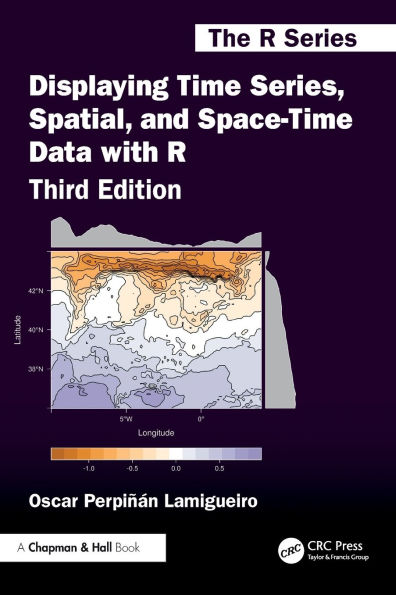While the first edition primarily focused on static graphics, and the second edition significantly expanded upon interactive elements, this edition has been thoroughly updated with a modern emphasis. Key enhancements include:
· Comprehensive updates to all chapters: Incorporating the latest advancements in packages like "sf" and "terra."
· New content: Introducing valuable topics such as trajectories, hill shading, and cartograms, enriching the scope of the book.
The book illustrates how to display a dataset starting with an easy and direct approach and progressively adding improvements that involve more complexity. Each of the three parts of the book is devoted to different types of data. In each part, the chapters are grouped according to the various visualization methods or data characteristics.
Features
• Offers detailed information on producing high-quality graphics, interactive visualizations, and animations
• Uses real data from meteorological, climate, economic, social science, energy, engineering, environmental, and epidemiological research in many practical examples
• Shows how to improve graphics based on visualization theory
• Provides the graphics, data, and R code on the author’s website, enabling you to practice with the methods and modify the code to suit your own needs.
While the first edition primarily focused on static graphics, and the second edition significantly expanded upon interactive elements, this edition has been thoroughly updated with a modern emphasis. Key enhancements include:
· Comprehensive updates to all chapters: Incorporating the latest advancements in packages like "sf" and "terra."
· New content: Introducing valuable topics such as trajectories, hill shading, and cartograms, enriching the scope of the book.
The book illustrates how to display a dataset starting with an easy and direct approach and progressively adding improvements that involve more complexity. Each of the three parts of the book is devoted to different types of data. In each part, the chapters are grouped according to the various visualization methods or data characteristics.
Features
• Offers detailed information on producing high-quality graphics, interactive visualizations, and animations
• Uses real data from meteorological, climate, economic, social science, energy, engineering, environmental, and epidemiological research in many practical examples
• Shows how to improve graphics based on visualization theory
• Provides the graphics, data, and R code on the author’s website, enabling you to practice with the methods and modify the code to suit your own needs.

Displaying Time Series, Spatial, and Space-Time Data with R
310
Displaying Time Series, Spatial, and Space-Time Data with R
310Paperback(3rd ed.)

Product Details
| ISBN-13: | 9781032779201 |
|---|---|
| Publisher: | CRC Press |
| Publication date: | 11/09/2025 |
| Series: | Chapman & Hall/CRC The R Series |
| Edition description: | 3rd ed. |
| Pages: | 310 |
| Product dimensions: | 6.12(w) x 9.19(h) x (d) |
